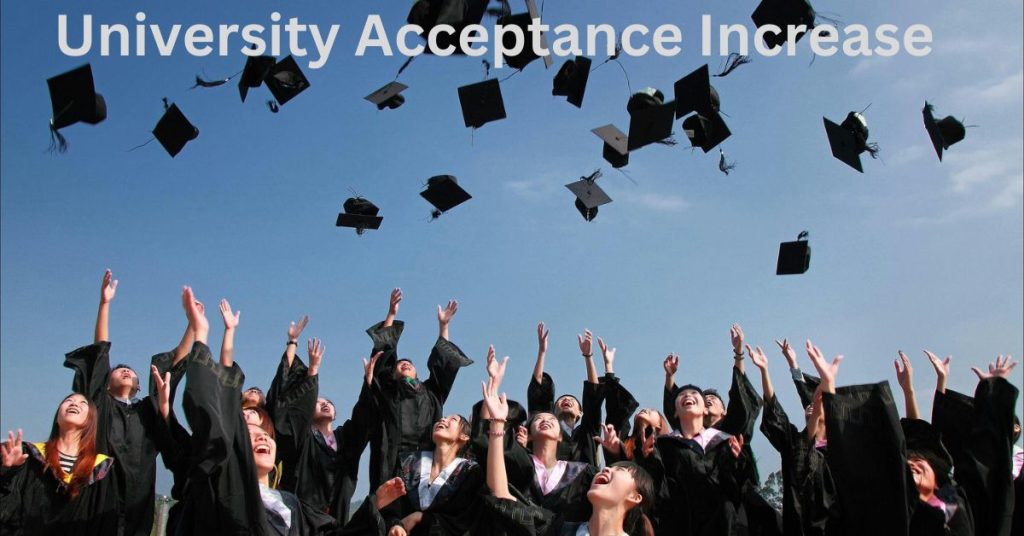The Rise in University Acceptances in the UK
In a remarkable shift, record numbers of school leavers in England are rapidly securing university spots, filling the void created by a significant drop in EU student applications, according to the latest data.
The University Acceptance Increase and College Admissions Service (Ucas) reports that the number of students accepting university places has exceeded last year's record, with 435,000 students securing positions within a day of receiving their A-level results. This marks an increase of 5,000 students compared to the previous year. The surge is attributed to a combination of factors, including the growing number of students achieving high A-level grades and the subsequent competition for available spots.
This year, 149,000 students were still actively searching for university places through the clearing process the day after receiving their A-level results. This figure represents a 15% increase from 2020. Additionally, 11,000 students had already found places, UK University Acceptance Increase including those who applied directly to clearing. The significant rise in clearing applications underscores the intense demand for university spots and highlights the challenges faced by students navigating the admissions landscape.

The most notable increase in acceptances is observed at leading universities, which have admitted 20,000 more students compared to previous years. This surge follows a record-breaking number of students achieving top grades in their A-levels. The increased number of domestic students filling available places is partly due to the reduced influx of EU students, who have traditionally occupied a significant portion of university spots.
This academic year marks the first instance where UK University Admission Increase UK EU students without British passports are required to pay considerably higher international fees, resulting in a dramatic halving of EU student acceptances for the autumn term. The decline in University Acceptance Increase numbers is partly balanced by a 9% increase in acceptances among non-EU international students.
Admissions officers are expressing concerns about a shortage of places in the most popular courses at competitive universities. The remaining spots are expected to be filled quickly, highlighting the heightened competition among students. Tracey Lancaster, Deputy Vice-Chancellor at Leeds Beckett University, explains that this year's clearing university acceptance increase UK process is influenced by several factors. Students who narrowly missed their expected grades are facing unexpected rejections from universities that would typically have accepted them, leaving them unprepared for the clearing process. Conversely, students who performed better than anticipated are struggling to find available places due to the high demand and limited course spots.
Lancaster notes that the increased reliance on social media for information and support has led to more students seeking assistance via phone, as their situations become more complex. The University Acceptance Increase rise in clearing numbers, despite more students accepting offers from their first-choice universities, indicates a heightened need for support and guidance throughout the admissions process.
Interestingly, there has been a notable increase in the number of students from more affluent backgrounds securing university places quickly. university acceptance increase UK A 9% rise in students from wealthier postcodes finding places within a day contrasts with a 6% increase among students from less affluent areas. This disparity highlights ongoing issues related to educational inequality.
The gap between A-level grades achieved by private and state school students has reached its widest in recent years, corroborating predictions that teacher-assessed grades would exacerbate existing inequalities. This University Acceptance Increase disparity underscores the challenges faced by students from different educational backgrounds in achieving competitive results.
Additionally, there has been a significant rise in the number of sixth-form students choosing to defer their university offers. This year, 6,000 students—a 36% increase—have opted to delay their university start. Factors contributing to this trend include a university acceptance increase UK 10% rise in applications, students achieving higher-than-expected grades choosing to reapply, and oversubscription of courses. This increase in deferrals reflects the evolving dynamics of university admissions and the complex decisions students are making in response to a competitive and evolving academic environment.
Overall, the landscape of university admissions in England is marked by unprecedented levels of domestic student acceptance, a sharp decline in EU student university acceptance increase UK, and increased competition for available spots. As students navigate this challenging environment, the need for comprehensive support and guidance remains crucial to ensure equitable access to higher education opportunities.
Comments (0)